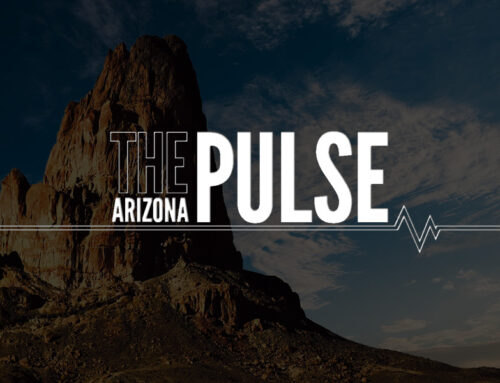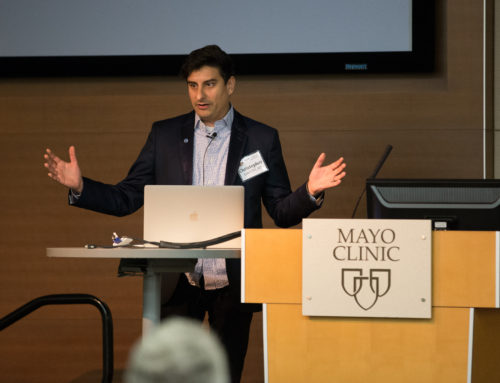Written by: Babak M. Nayeri, NMD, MS, FABMP, FABFM, and John Molina, MD, JD, HLD, former Chair, Policy Committee, Arizona Falls Prevention Coalition
“Officials scramble to address the hidden crisis.” This was the headline in a recent article in an AARP bulletin. The article goes on to explain that falling has been typically accepted as a part of aging but now has become a growing public health crisis that poses challenges for healthcare providers and policymakers. Unintentional falls were the leading cause of injury-related deaths among Arizona residents age 65+ from 2012-2018. In 2018, falls in Arizona accounted for over 47,000 emergency department visits, nearly 16,500 hospitalizations, and 976 deaths, generating significant economic and personal costs upwards of $1.5 billion in the same year. This becomes even more relevant when the number of Arizonans age 65 and older is expected to increase 174% from 883,014 in 2010 to 2,422,186 in 2050. Additionally, the proportion of adults age 65 and older will represent an estimated 21% of the entire population.
Healthcare providers may not view falls prevention as a priority due to other competing chronic health conditions of their patients. However, healthcare providers play an important role in falls prevention by identifying older adults who are more likely to fall and providing clinical preventive services to help reduce these risks. Research recommends that healthcare practices develop an infrastructure for fall risk assessment and intervention while connecting patients to local resources that can provide evidence-based interventions that promote lifelong exercise and preserve function.
The Arizona Falls Prevention Coalition (AFPC) is an exceptional example of a statewide community-based coalition. The mission of the AFPC, under the guidance of the Arizona Department of Health Services’ Healthy Aging Program, is to reduce the risks of falls among elderly Arizonans through education, outreach, evaluation, and advocacy. To achieve this mission, the AFPC regionalizes outreach through Northern, Southern, and Western Chapters. The membership of this coalition consists of individuals from state and county agencies, non-profit community organizations, Native American organizations, and volunteer Arizona residents.

The Chapters of AFPC do an excellent job reaching out to our rural populations and recognizing the unique challenges our elders face in these areas. For example, the AFPC can help locate socialization activities and top-tier evidence-based programs that address exercise to assist with falls prevention in these areas. The organization also helps coordinate transportation to activities for non-drivers or those that live alone. Other assistance may cover education around falls risks from pets (commonly their only companionship), lack of assessment taking place by primary care providers, and follow up when the assessments do take place.
The CDC recommends four evidence-based strategies to prevent falls in their Stopping Elderly Accidents, Deaths, and Injuries (STEADI) Program. Designed to help identify patients at risk for falls and to address modifiable risk factors, the STEADI recommendations are paired with high-quality resources for healthcare providers (https://www.cdc.gov/steadi/materials.html) and patients to tackle the emerging epidemic of falls with the aging population.
CDC STEADI Recommendations:
- Talk with your patients about falls. Encourage patients to talk openly about falls and the fear of falling with you. Reviewing their medications for possible increases in falls risk can be a good place to start.
- Recommend exercise to improve strength and balance.
- Examine feet and eyes annually. Write a referral if necessary. Tell patients to replace eyeglasses as needed.
- Tell patients to assess home safety and improve their environment. Ask them to engage family members and friends to help. Their home can easily be made safer by removing clutter and tripping hazards.
Together we can reduce falls and the debilitating burdens they bring to our patients and community. Using the resources below, learn more about what you can do to prevent falls in your practice.
RESOURCES:
CDC STEADI Program
https://www.cdc.gov/steadi/materials.html.
www.cdc.gov/steadi/training.html (click on provider training)
Arizona Falls Prevention Coalition
Arizona Department of Health Services, Healthy Aging Program
Arizona, Association of Area Agencies on Aging
REFERENCES:
Arizona Hospital Discharge Data 2018
Arizona Vital Statistics 2018
Schmitt, R. Fear of Falling. AARP Bulletin. December 2015. Accessed at:
https://www.aarp.org/health/conditions-treatments/info-2015/fear-of-falling.html
Arizona Falls Prevention Coalition. Accessed at:
https://www.azdhs.gov/prevention/tobacco-chronic-disease/healthy-aging/falls-prevention/index.php
Aging in Arizona: Health Status of Older Arizonans. Arizona Department of Health Services. Bureau of Health Statistics. April 16, 2014. Accessed at: https://pub.azdhs.gov/health-stats/report/aging/aia-report.pdf
Kaniewski M, Stevens JA, Parker EM, Lee R. An Introduction to the Centers for Disease Control and Prevention’s Efforts to Prevent Older Adult Falls. Front Public Health. 2015;2:119. Published 2015 Apr 27. doi:10.3389/fpubh.2014.00119
Demons, JL, Duncan, PW. The role of primary care providers in managing falls. NCMJ. Vol. 75, No. 5. Accessed at: http://www.ncmedicaljournal.com/content/75/5/331.full.pdf
About the Authors:

Dr. Nayeri serves as the state’s lead for Healthy Aging. In his current duties as Director of Healthy Aging Program at the Arizona Department of Health Services, Bureau of Chronic Disease and Health Promotions Dr. Nayeri serves as:
Arizona Falls Prevention Coalition, immediate past Chairperson and Leadership Council
Military Liaison on the Arizona Healthcare Executives (State Chapter for the American College of Health Care Executives)
Chairperson, Arizona Attorney General’s Health and Safety Committee (HSC)
Board member, Office of the Attorney General’s Taskforce Against Senior Abuse (TASA)
Advisor-Liaison, Governor’s Advisory Council on Aging
Advisor-Liaison, Arizona Alzheimer’s Task Force
Team Lead, Healthy Brain Initiative Learning Lab
Current faculty appointments include:
Clinical associate professor at the University of Arizona, College of Medicine, Geriatrics, General Internal Medicine and Palliative Medicine
Research Associate, Center on Aging
Scientific Member, Healthy Brain Research Network
Adjunct Professor, University of Arizona, Mel & Enid Zukerman College of Public Health
Adjunct Professor, Arizona State University, College of Health Solutions & the Edson College of Nursing and Health Innovation
Dr. Nayeri completed the A.T. Still University’s master physician educator fellowship I & II, and recognized as a Faculty Fellow, ASU Center for Innovation in Health and Resilient Aging (CIHRA). He further serves on the Public Policy and Scientific Program Committee of the American Academy of Addiction Psychiatry as well as other professional organizations in which he holds current added qualifications at Fellow and Diplomate levels.

Dr. Molina is the Compliance Officer for Native Health, an Urban Indian Health Center in Phoenix, Arizona. He is also Affiliate Faculty with the Mel and Enid Zuckerman College of Public Health, University of Arizona. Dr. Molina is a graduate of the University of Arizona, College of Medicine and the Sandra Day O’Connor College of Law at Arizona State University. His academic interests are in healthcare law and policy related to healthcare disparities, and Precision Medicine.





